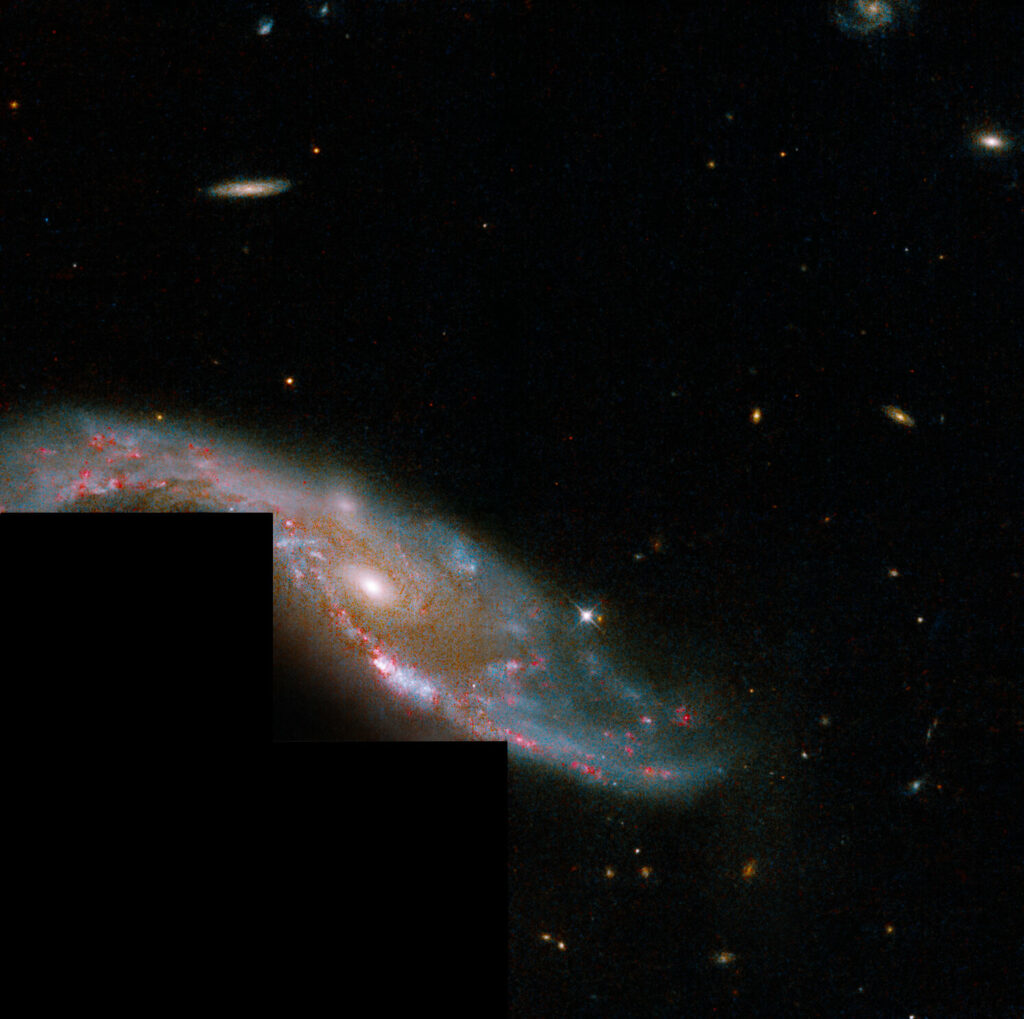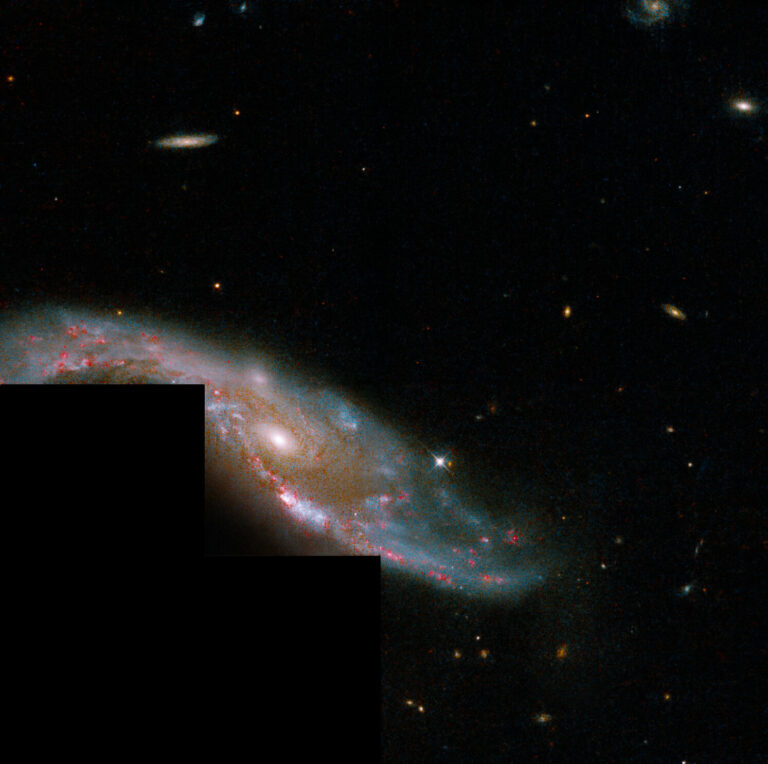The spiral galaxy is observed by the Hubble telescope in a state of interaction.
This photograph showcases the spiral galaxy NGC 3509, captured by the Wide Field and Planetary Camera 2 on NASA’s Hubble Space Telescope. NGC 3509, located approximately 350 million light-years away, is a fascinating galaxy with a sweeping tidal tail that is not visible in this particular image.
During its observation, Hubble studied the physical conditions within the nuclei of strongly interacting and merging galaxies. Surprisingly, NGC 3509 possesses a solitary, relatively undisturbed nucleus surrounded by dust lanes that form a swirling pattern. This indicates that the galaxy has not experienced a significant merger between its disks. Instead, it is possible that NGC 3509 underwent a minor merger with a smaller galaxy or is currently interacting with a small companion, which is responsible for the creation of the tidal tail through its gravitational influence.
Similar to other spiral galaxies, NGC 3509 is actively generating new stars. In this image, the color red represents near infrared wavelengths of light, highlighting the regions along the galaxy’s spiral arms where star formation is occurring.

This article is republished from PhysORG under a Creative Commons license. Read the original article.
Do not forget to share your opinion with us to provide you with the best posts !




0 Comments